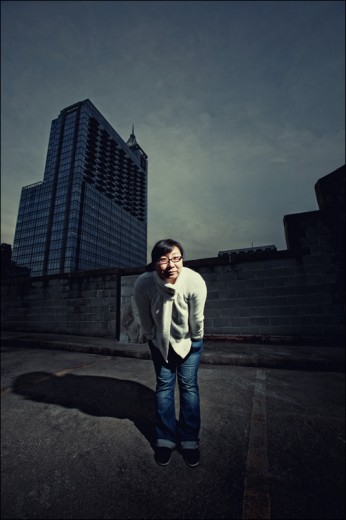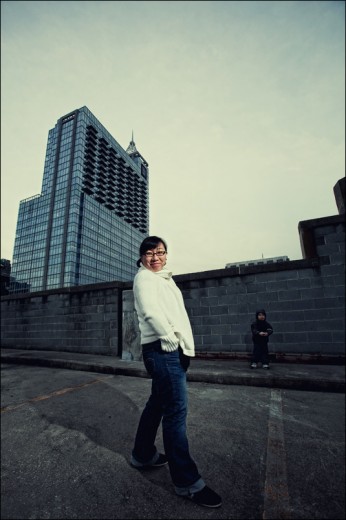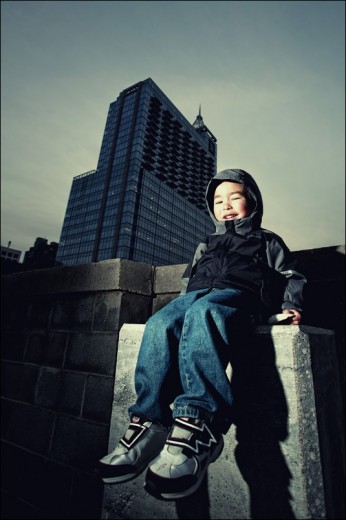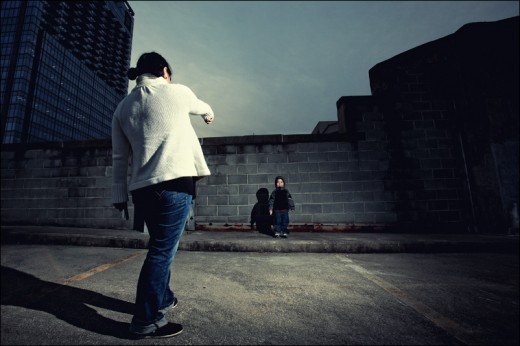Light is Everything
I’ve probably written about it before, but I have some new photos with some new toys, and thought it was time to reassert something that a lot of budding photographers overlook in their quest to have the best gadgets: light is the KEY to great photos. I’m not saying strobes are key, or speedlites are key, or fresnel spotlights are key. What I’m saying is that light–the quality of it, the quantity of it, the angle of it–is one of the single most important components of a photograph (and, on the most fundamental level, light is REQUIRED to make photographs, obviously).
 My usual setup is a couple of studio strobes (Alienbees if you’re curious), and it’s a relatively cheap way to make great photos because you are able to control and shape light to your creative vision. There is a great variety of modifiers out there–softboxes, umbrellas, beauty dishes, grids, the list goes on–and you can make the setups as simple or complex as you can dream up. There is a lot of power, though, in even one light.
My usual setup is a couple of studio strobes (Alienbees if you’re curious), and it’s a relatively cheap way to make great photos because you are able to control and shape light to your creative vision. There is a great variety of modifiers out there–softboxes, umbrellas, beauty dishes, grids, the list goes on–and you can make the setups as simple or complex as you can dream up. There is a lot of power, though, in even one light.
 And you don’t even need studio strobes. I am shooting a wedding next month in Kansas City, and want to bring my lights with me to get some really great shots of the couple in various places around the city. I had the logistics of getting lightstands, strobes, a softbox, and related accessories to Kansas City (a combination of shipping, checking, and possibly local renting), and then I realized I’d have to bring my Vagabond battery pack, a thirty plus pound anchor of a battery that I’d need to power my strobes. Not wanting to lug it with me, pay for shipping something that heavy, or purchase it again for a single event, I altered my strategy.
And you don’t even need studio strobes. I am shooting a wedding next month in Kansas City, and want to bring my lights with me to get some really great shots of the couple in various places around the city. I had the logistics of getting lightstands, strobes, a softbox, and related accessories to Kansas City (a combination of shipping, checking, and possibly local renting), and then I realized I’d have to bring my Vagabond battery pack, a thirty plus pound anchor of a battery that I’d need to power my strobes. Not wanting to lug it with me, pay for shipping something that heavy, or purchase it again for a single event, I altered my strategy.
I bought some cold shoes to hold my speedlights (A Canon 430ex and 580ex) on my light stands, and an ST-E2 transmitter to control them. The photos in this blog are the result of some testing with just a bare 580ex and the ST-E2, adjusting angles, speedlight zoom, power, and distance, and adjusting exposure.
 I could have shot these with natural light, and often do prefer to shoot with natural light and eschew the often distracting and annoying brightness of speedlights. Still, I like to have the ability to direct and shape the light to add interest and depth, and/or mood to my photos, and I enjoy experimenting with strobes when I can.
I could have shot these with natural light, and often do prefer to shoot with natural light and eschew the often distracting and annoying brightness of speedlights. Still, I like to have the ability to direct and shape the light to add interest and depth, and/or mood to my photos, and I enjoy experimenting with strobes when I can.
My point in this post, though, is how much power and control you can have over your photos with a single speedlight and something to control it. I bought both the ST-E2 and 580ex used, and the lightstand is of the cheap variety (cost, not quality) from Calumet. The coldshoe is something like ten bucks. The absolute cost isn’t trivial, but for those aspiring to L lenses and full-frame cameras, the whole setup for these was considerably less than a single L lens.
The thing with the lights is that any DSLR will do the trick, and since you’re not using super fast apertures, you don’t need a fancy pro lens. People have demonstrated that with good light, you can even use your iPhone and get great results.
So those of you out there who are looking at the top-shelf gear: there’s nothing wrong with wanting, owning, or using said gear. Just remember that there is tremendous value in things other than cameras and lenses, and that the best cameras and lenses can’t fix crappy light. Bringing your own light can (to an extent).
Of course, this doesn’t work for all kinds of photography, so all you landscape dudes and dudettes out there can just skim this post and shrug. But for those portrait shooters out there, hopefully I’ve said something useful.
I’m hoping at some point to write some sort of comparo about the pros and cons of strobes vs. speedlights, but obviously I will need a lot more time with the speedlights before I’d feel qualified to make any solid conclusions.

